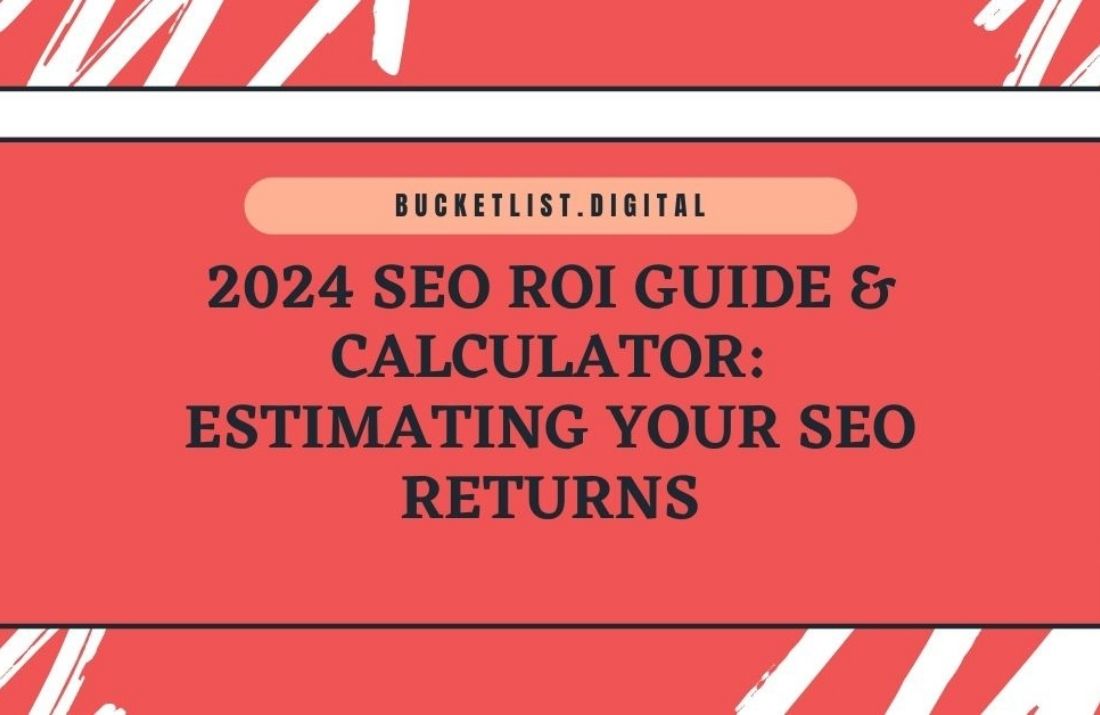Did you know that 53% of all website traffic comes from organic search, and 60% of B2B SaaS marketers find SEO to be their top lead generator? Companies like NerdWallet have thrived on SEO, yet it remains a small part of many marketing budgets, mainly due to its unpredictability.
Most businesses invest heavily in paid advertising because it offers clear ROI projections. However, SEO is often underfunded because calculating its ROI is complex. This guide aims to demystify SEO ROI, which is crucial for effective budget management.
In this guide, we’ll cover:
- What is SEO ROI and why it matters.
- Calculating SEO ROI: Metrics and Costs.
- Tips for optimizing your SEO investments.
- The importance of a long-term view in SEO evaluation.
Let’s start by defining SEO ROI.
What is SEO ROI?
SEO ROI, or Search Engine Optimization Return on Investment, measures the profitability or marketing results derived from a company’s budget invested in improving search engine rankings. To break it down further:
- Search Engine Optimization (SEO): Strategies to enhance website rankings on search engines, increase organic traffic quality and volume, and drive conversions and revenue.
- Return on Investment (ROI): A profitability measure comparing investment cost to profit. Formula: ROI = (Revenue – Cost) / Cost.
For SEO, ROI gauges how much profit or results you gain from each dollar invested.
Why to Measure SEO ROI?
Measuring SEO ROI empowers businesses to make informed marketing budget decisions. Organic search traffic has grown from 51% in 2014 to 53% in 2019 and delivers impressive ROI compared to other digital channels. However, challenges in measuring SEO ROI persist:
- Numerous Metrics: SEO involves tracking various metrics, such as revenue, keyword rankings, traffic volume, conversion rates, and more.
- Lack of Control: SEO outcomes are influenced by user behavior and search engine algorithms, making direct control challenging.
- Uncertain Growth Costs: Calculating growth in SEO results and associated costs can be elusive, as results accrue over time.
- Agency Data Availability: Working with SEO agencies may hinder data access, impacting ROI assessment.
- Insufficient Analytics: Inadequate data or interpretation skills may hinder effective ROI analysis.
Despite these challenges, tracking SEO ROI is essential to determine if investments yield organic growth and conversions to justify costs.
Important SEO Metrics
Understanding SEO metrics and their impact on your business is crucial. Key metrics include:
- Keyword Rankings: Assess your page’s rank for target keywords and track improvements.
- Keyword Volume: Measure search frequency for target keywords to estimate potential traffic.
- Keyword Difficulty: Evaluate competition for target keywords to determine feasibility.
- Page Authority and Domain Authority: Gauge the ranking strength of pages, both yours and competitors’.
- Traffic Volume: Measure incoming traffic from specific keywords to predict conversions.
- Conversion Rate: Track the rate at which traffic from certain keywords leads to conversions.
- Lifetime Value of a Customer (LTV): Assess the long-term value of customers, especially those from organic search.
- Incorporating Mislabeled Organic Traffic: Understand how mislabeled direct traffic affects your ROI analysis.
SEO Costs
The ROI calculation’s other half involves SEO costs, including:
- SEO Tools: Investments in tools for keyword research, tracking, and analysis.
- Content Creation: Expenses for content creation, including writing, design, and promotion.
- Link Building: Costs associated with acquiring quality backlinks.
- Development Resources: Expenses for site updates and maintenance.
- Time and Agency Retainers: Labor costs for in-house teams or agency services.
Factoring in these costs is crucial for accurately assessing SEO ROI.
By understanding SEO ROI and its components, you can optimize your investments, improve budget allocation, and achieve meaningful results from your SEO efforts in 2023.”
Utilizing the SEO ROI Calculator
If you’re seeking clarity on your SEO investments, an SEO ROI Calculator is your go-to tool. It provides insights for planning new investments or understanding the returns expected from current ones.
The complexity of SEO ROI calculations can be overwhelming due to numerous variables. To simplify this process, we’ve developed an easy-to-use SEO ROI calculator. It takes your input on costs, keywords, conversion rates, and customer lifetime value, providing a quick estimate of the results you can anticipate from your SEO efforts.
Using our SEO ROI Calculator involves four steps:
- Gather the Required Data:
- Total Monthly Search Volume: Collect data for all target keywords using tools like Moz, Ahrefs, or SEMrush.
- Total Production Costs: Include expenses for content production and link-building activities.
- Lead Conversion Rate: Identify the conversion rate for organic traffic.
- Sales Close Rate: Determine how many leads convert into customers.
- Average Lifetime Value of a Customer (LTV): Understand the revenue expected from a customer over their lifetime.
- Monthly Organic Spend: Allocate your monthly budget for SEO activities.
- Find the Total Monthly Volume for Target Keywords:
- Use tools like Ahrefs’ Keyword Explorer to gather this data.
- Calculate Total-Content Production and Link Building Needs:
- Analyze your keyword’s ranking competition to estimate content and link-building requirements.
- Ensure Data Accuracy:
- Double-check all data points, especially production costs, which can vary.
This calculator focuses on content creation and link-building costs. Be sure to factor in other SEO expenses like site improvements as needed.
Our SEO ROI Calculator is designed for ease of use. It’s similar to what we use internally but customized for you to input your costs. Note that it doesn’t include agency-based retainers, strategy work, technical audits, or keyword research.
Understanding the Results:
The calculator generates estimated ROI figures based on the provided metrics and data. If you execute the planned actions accurately and achieve top-5 keyword rankings, you should expect a reasonably accurate ROI projection. However, if your actions don’t yield the desired rankings, your ROI may fall short.
Remember that this calculation may underestimate your true potential, as it’s challenging to predict all potential keywords your content could rank for.
Budgeting for SEO Marketing Expenses
Once you have an idea of your SEO ROI, you can strategically plan your marketing budget to maintain profitability. Whether using our calculator or your calculations, estimating SEO costs is key to financial stability.
Plan your SEO marketing budget in four steps:
- Content Production Planning:
- Identify the content required for ranking on target keywords or topics.
- Promotion and Link Building:
- Plan the promotion and link-building efforts needed to support your content.
- Asset and Cost Itemization:
- List all assets and costs necessary for achieving your desired ranking.
- Time Estimation:
- Calculate the time needed to produce and deploy assets, creating a timeline for ROI expectations.
This last step is crucial for budget sustainability. Knowing when to expect ROI prevents overspending upfront.
Understanding Long-Term SEO Investment:
Think of SEO as a long-term investment with compounding value. Like a savings account or stocks, the value of SEO grows over time. For instance, a well-promoted piece of content attracts more visitors, boosts search engine rankings, and supports other content on your site. This positive feedback loop enhances your site’s overall authority.
When planning your SEO investment, consider this compounding effect. Calculate ROI by estimating returns and comparing them to costs, whether in terms of revenue or SEO metrics. Keep in mind that SEO assets can continue to bear fruit for years, making long-term ROI calculation challenging but essential.
In conclusion, planning your SEO ROI offers valuable insights into expected returns from your marketing investment. It helps you focus on profitable campaigns, avoid unprofitable ones, and keep your budget sustainable over the long term.
[/fusion_text][/fusion_builder_column][/fusion_builder_row][/fusion_builder_container]








